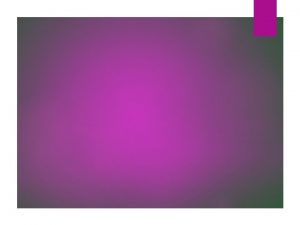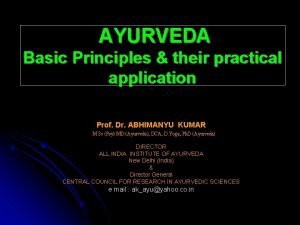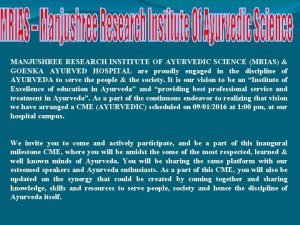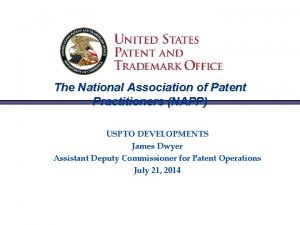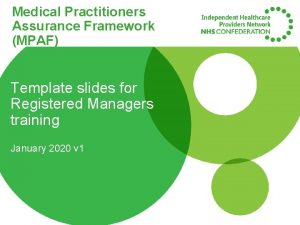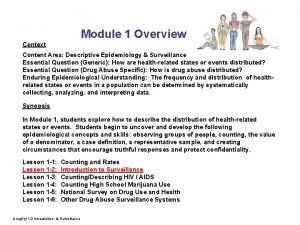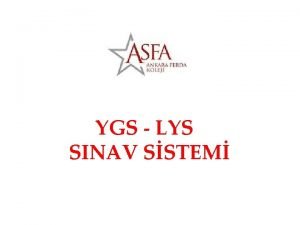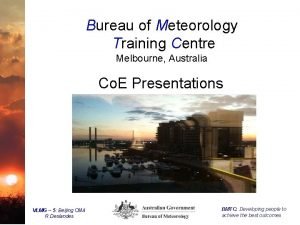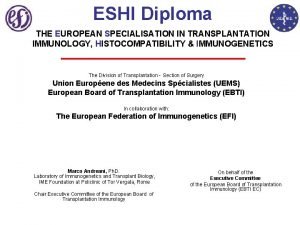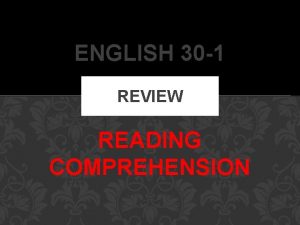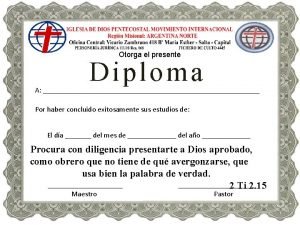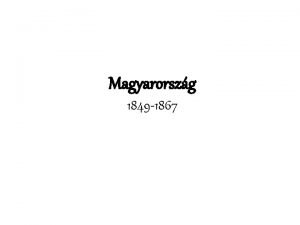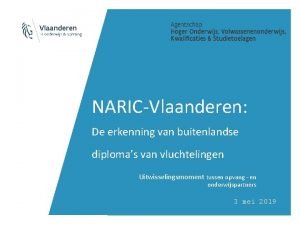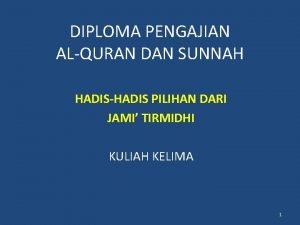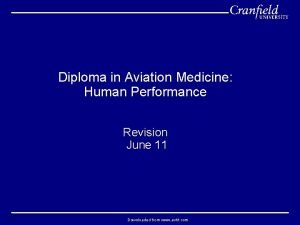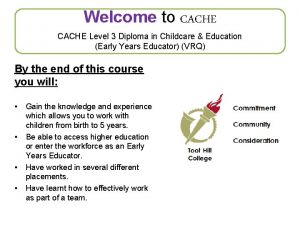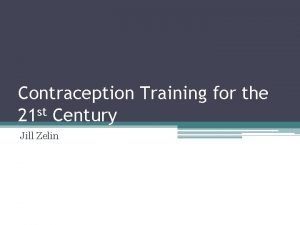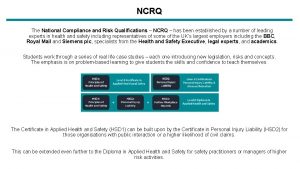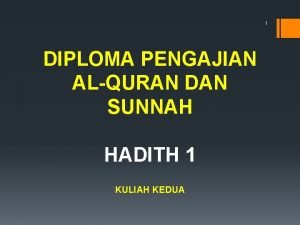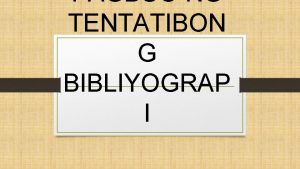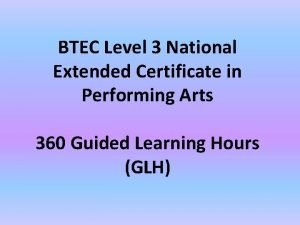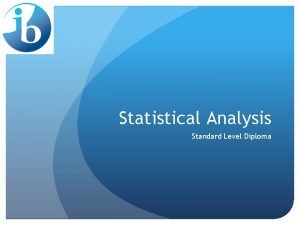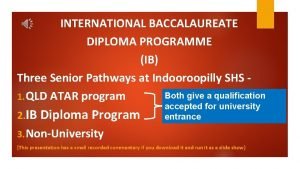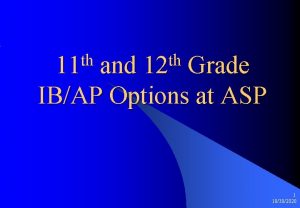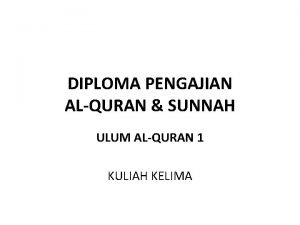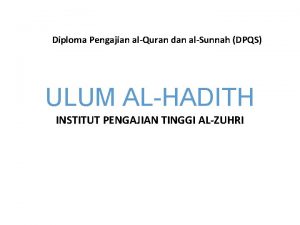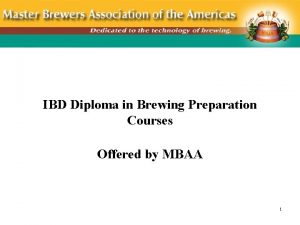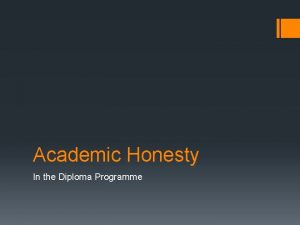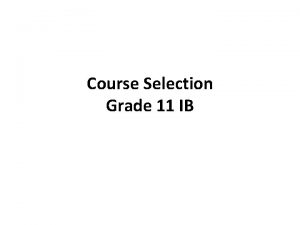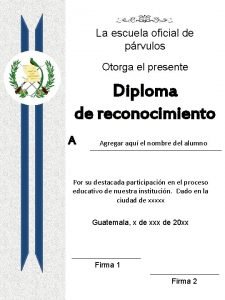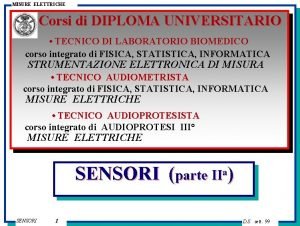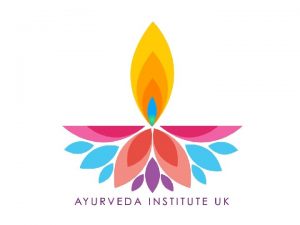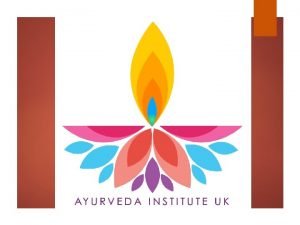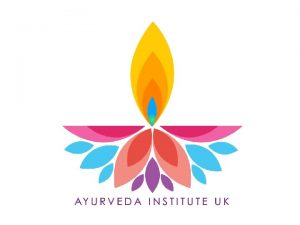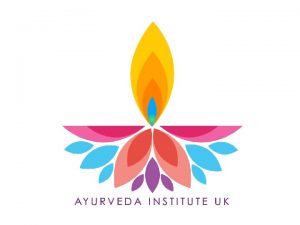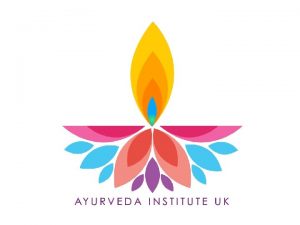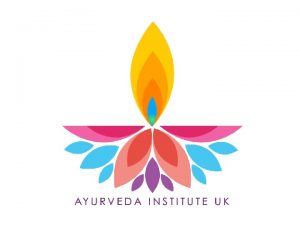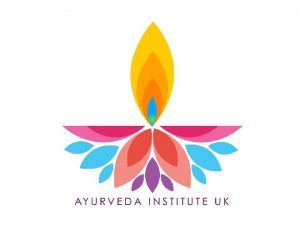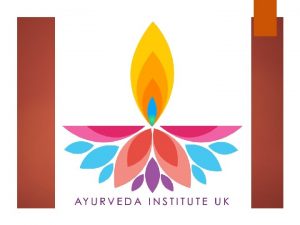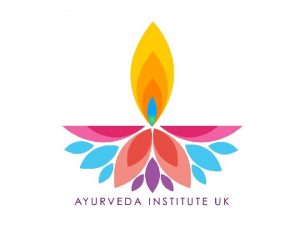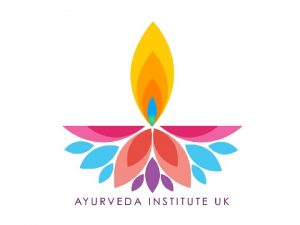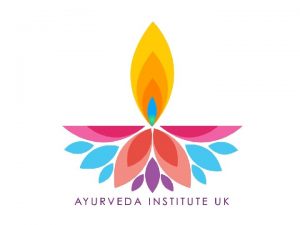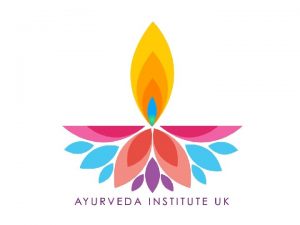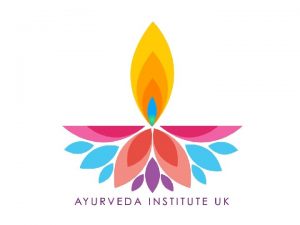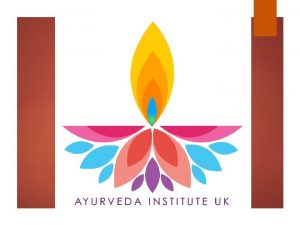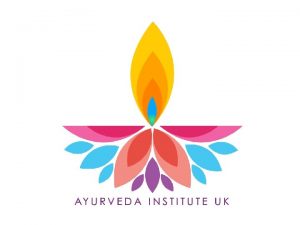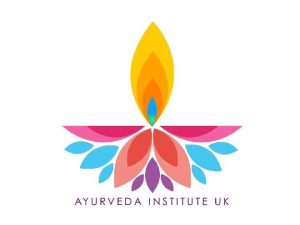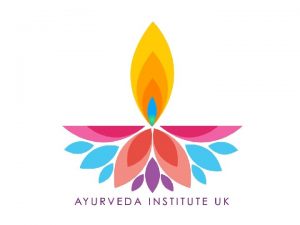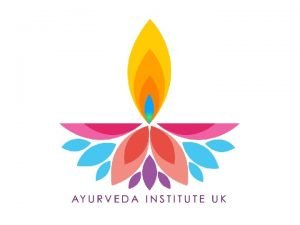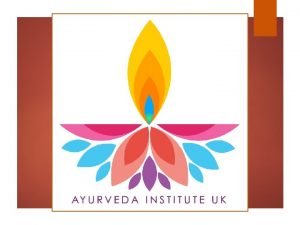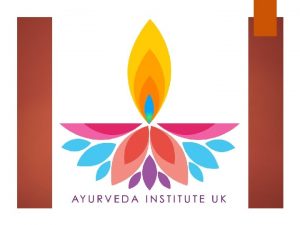DIPLOMA Ayurvedic Practitioners Course Module 5 7 th

















































































- Slides: 81


DIPLOMA Ayurvedic Practitioners Course Module 5 7 th – 11 th March 2020 2

Meharoga (Diabetes)

Meharoga (Diabetes) The Allopathic perspective • Lifelong condition • Blood sugar (glucose) level becomes too high • Incurable • Can only be managed

Meharoga (Diabetes) The Allopathic perspective Two main types of diabetes: • type 1 – pancreas doesn't produce any insulin • type 2 –pancreas doesn't produce enough insulin or the body's cells don't react to insulin

Meharoga (Diabetes) The Allopathic perspective Symptoms of diabetes: • Typical symptoms of type 1 diabetes are: • feeling very thirsty • passing urine more often than usual, particularly at night • feeling very tired • weight loss and loss of muscle bulk

Meharoga (Diabetes) The Allopathic perspective Complications: • Hypo / hyperglycemia • Loss of vision • Blindness • Kidney failure • Lower limb amputation • Cardiovascular disease • Stroke • Diabetic retinopathy • Kidney disease • Foot problems • Sexual dysfunctions • Miscarriage and still birth

Meharoga (Diabetes) The Allopathic perspective Children: • Childhood diabetes mostly connected to being overweight or interfamilial marriage

Meharoga (Diabetes) The Allopathic perspective Main symptoms: • • feeling very thirsty urinating more frequently, particularly at night feeling very tired weight loss and loss of muscle bulk itchiness around the genital area regular bouts of thrush (a yeast infection) blurred vision slow healing of cuts and grazes

Meharoga (Diabetes) The Allopathic perspective When to seek urgent medical attention as a diabetic: • a loss of appetite • nausea or vomiting • high temperature • stomach pain • fruity smelling breath – which may smell like pear drops or nail varnish (others can smell it)

Meharoga (Diabetes) The Allopathic perspective Investigation: • Urine tests • Blood tests (Glycated haemoglobin (Hb. A 1 c) test)

Meharoga (Diabetes) The Allopathic perspective Treatment: • No cure • Treatment aims to keep blood glucose levels as normal as possible and control symptoms

Meharoga (Diabetes) The Allopathic perspective Type 1 diabetes – treatment: • Insulin dependent • Injections needed or high dose insulin taken orally

Meharoga (Diabetes) The Allopathic perspective Type 2 diabetes – treatment: • Metformin • Sulphonylureas – Sulphonylureas increase the amount of insulin that's produced by your pancreas. • Insulin

Meharoga (Diabetes) The Allopathic perspective Reading Glycated haemoglobin (Hb. A 1 c) test: • Target Hb. A 1 c level usually be less than 59 mmol/mol (7. 5%) • Can be as low as 48 mmol/mol (6. 5%) • Between 7. 5% to 16% indicates diabetes • Above 16% indicates chronic diabetes



Meharoga (Diabetes) The Ayurvedic perspective Nidana: • • Love for food + sedentary lifestyle Pleasurable daytime sleep Excessive consumption of dairy products Consumption of village animal meat eg. chicken, goat Excessive consumption of fresh water fish Excessive consumption of fresh fruit and vegetables Excessive consumption of cane sugar and jaggery Kapha producing foods such as dense carbohydrates

Meharoga (Diabetes) The Ayurvedic perspective Purva rupa: • • • • Tiredness Polyuria Thirst Excessive sweating Sweet smell of sweat Goosebumps appearing without temperature change Looseness of joints Excessive desire for the bed Excessive desire for sex Tongue, eyes and ears – coating and sleep and wax Rapid growth of nails and hair Excessive need to cool down Dryness in mouth and throat Burning sensation in hands and feet

Samprapti (diagram I): F O O D Further digestion SARA JATARAGNI (stomach) KITTA Excreta

Samprapti (diagram II): SARA EARTH PANCHABUTA AGNI (Cloma Agni / pancreas WATER Disorder starts Water Fire FIRE FIVE ELEMENTS AIR ETHER

FIVE ELEMENTS RASA Sugar present Infection / fungus RAKTA Glucose Hyperglycaemia MANSA MEDAS First weight Then weight First muscle Then muscle SROTAS BLOCKED ASTHI Weakens, pain Calcium MAJJA Immunity SUKRA Libido Infertility Impotence

Meharoga (Diabetes) The Ayurvedic perspective Samprapti: • Causative factors stimulate jataragni • Food becomes sara (nutrition) and kitta (waste products) • Nutrition (five elements) goes to the dhatu levels via srotas • Waste products exit via excretory system

Meharoga (Diabetes) The Ayurvedic perspective • Due to the high water content of the food the fire element (pitta) is imbalanced • Excess water dislodges the pitta • The water liquifies the fat • This water (kledaka) circulates through the sapta dhatu • Deposited in pitta related dhatu – mansa (muscle) and medas (fat) • This imbalanced kapha prominent dhatu (mansa and medas) grow • First sign = excess weight in the body

Meharoga (Diabetes) The Ayurvedic perspective • Blockage of dhatu ladder (at medas level) means lower dhatu levels malnourished • Apana vata becomes imbalanced and dry • Apana vata draws water from the upper dhatu (medas and mansa, which are saturated with water) • The water / kledaka contains nutrients (glucose) • Kledaka is processed through the kidneys • Malnourished lower dhatus continue to imbalance apana vata • Causes constipation • Increases samana vata and stimulates the agni • Increases craving for sweet, sour, savoury foods

Meharoga (Diabetes) The Ayurvedic perspective • Asthi dhatu – malnutrition results in reduced calcium leading to osteoporosis and joint pain • Majja dhatu – malnutrition results in unability / reduced capacity to strengthen immunity – diabetic retinopathy – prone to flu / cold and other disorders • Sukra dhatu - infertility / low libido / tiredness • Ojas - reduces immunity / increases tiredness / lack of enthusiasm / depression

Meharoga (Diabetes) The Ayurvedic perspective • Due to the blocked srotas, kledaka travels to upper dhatus (vimarga gamana) and there is an upwards overflow • Rakta dhatu - excess glucose present causing hyperglycaemia • Rasa dhatu – sweet smell and pungent taste – fungul disorders / thrush / excessive sweating / bad breath / skin disorders

Meharoga (Diabetes) The Ayurvedic perspective Signs & Symptoms: • Tri-doshic disorder • Kapha plays a major role • Kapha, pitta and vata are vitiated and affect all dhatu levels in the body • Diabetes is associated with a lot of disorders • Each dhatu has its own imbalance

Meharoga (Diabetes) The Ayurvedic perspective Complications associated with diabetes: • • • • Diabetic neuropathy Diabetic retinopathy Diabetic ketoacidosis Diabetic carbuncles / boils Diabetic osteoarthritis Diabetic obesity Diabetic hyperglycaemia Diabetic neurosis Diabetic wounds Diabetic thrush Diabetic infertility Diabetic muscle wasting disorder Lack of libido / impotence

Meharoga (Diabetes) The Ayurvedic perspective Stages of the disorder according to dosha: Kapha stage • • 10 types of kapha diabetes curable as it is caused by increased kapha treated by reducing kapha (type 2 diabetes in Allopathy)

Meharoga (Diabetes) The Ayurvedic perspective Pitta stage 6 types of pitta diabetes incurable can only be managed cure is difficult as pitta and kapha dissimilar (when kapha - pitta & vice versa) • (Type 1 diabetes – autoimmune disorder in Allopathy) • •

Meharoga (Diabetes) The Ayurvedic perspective Vata condition • 4 types of vata diabetes • incurable • poor prognosis – nephritic syndrome – ketoacidosis – coma – gangrene

Meharoga (Diabetes) The Ayurvedic perspective Common signs & symptoms: • • • frothy / unclear urine colour of urine different joint pains urgency / frequency / quantity of urine increases thirst urination during the night

Meharoga (Diabetes) The Ayurvedic perspective Signs and symptoms according to dosha • Kapha diabetes – – – Loss of taste Indigestion Sleepiness Cough / congestion Itchiness around groin area • Pitta diabetes – – – Excessive sweating Bad odour Feeling hot Excessive thirst Craving for sour taste

Meharoga (Diabetes) The Ayurvedic perspective • Vata diabetes – – – Dizziness Pins and needles Constipation Depression Heart pain Dribbling Pain in body Insomnia Dryness of the body Dry cough Difficulty in breathing

Meharoga (Diabetes) The Ayurvedic perspective Treatment: • All types of diabetes difficult to cure • All three doshas vitiated and all seven dhatus affected • Can be cured or managed with more effort of the doctor and the patient, over a long period of time

Meharoga (Diabetes) The Ayurvedic perspective Avoid: • • • • Being seated for long periods without movement Daytime sleeping Fresh grains / fresh fruit / fresh vegetables Dairy products Suppression of urge to urinate Smoking Saunas Blood letting Alcohol / vinegar / fermented food Sesame oil / alkaline food / ghee / jaggery Acidic foods Sugar cane / sugary foods Carbohydrates Village animals / fish

Meharoga (Diabetes) The Ayurvedic perspective Chikitsa: • If the patient is overweight and has strength - detoxification treatment (shodana) – vamana / virechana • If the patient is emaciated and weak - rejuvenation treatment (vrunghana) • Urine and stools contain nutrition and ojas (extracted from the dhatus) so strong purgatives and diuretics should not be prescribed • External oleation and internal oleation (anuvasana vasthi – medicated oil enemas) can be administered Ø Fat / strengthened person – Apatarpana (detox / langana) Santarpana (rejuvenation) Ø Lean / weak person – Santarpana Apatarpana

Meharoga (Diabetes) The Ayurvedic perspective Medicines: • Kerawela tablets / vegetable • Gotukola tablets / vegetable • Triphala tablets • Triphala decoction + red rice, soak and cook and add honey • • • Hinguwastaka choorna Nimbadee choorna Chandanadee choorna • Cinnamon powder soaked with old honey (1/2 teaspoon once a day) • Black pepper + ginger + long pepper + honey (trikatu) • Can aggravate vata and have adverse effect

Meharoga (Diabetes) The Ayurvedic perspective Diet: • • • Type 2 diabetes treatable with diet and simple remedies Records of blood sugar levels and food diary Initially no changes to medications until the blood sugar level drops to a normal level • Oily fish ü Tuna ü Salmon ü Sardine ü Seafood • Red meat eg. beef • Fruit ü Avocado ü Papaya ü Apples ü (Avoid – mango / banana / grapes / pears (ripe) ü (Occasional – strawberry / blackberries / blueberries)

Meharoga (Diabetes) The Ayurvedic perspective • Grains ü Old grains / sun dried grains (roasted grains can be used if not available) ü Oats ü Oatmeal ü Arta flour (unrefined) ü Moong beans ü Chick peas ü Quinoa ü Buckwheat ü Chia seeds • Vegetables ü Pumpkin ü Butternut squash ü Cooked greens ü Cooked beans ü Cooked broccoli ü Cooked cabbage ü Cooked leeks

Meharoga (Diabetes) The Ayurvedic perspective • Condiments/oils ü Old honey ü Mustard oil • Tastes ü Bitter ü Kariwela ü Gotukola ü Rocket ü Watercress ü Kale

Medoroga (Obesity)

Medoroga (Obesity) The Allopathic perspective • "obese" = person who's very overweight, with a lot of body fat • Common problem in the UK • Affect 1 out of 4 adults & 1 in 5 children aged 10 -11 • Obesity defined by BMI (Body Mass Index) • Adult BMI 18. 5 to 24. 9 = healthy weight

Medoroga (Obesity) The Allopathic perspective Risks of obesity: • Causes physical changes and leads to serious and potentially life-threatening conditions: – type 2 diabetes – coronary heart disease – some cancers, eg. breast and bowel – stroke

Medoroga (Obesity) The Allopathic perspective Causes of obesity: • consuming more calories – particularly those in fatty and sugary foods • modern living = excessive amounts of cheap, high-calorie food, sitting down at desks, on sofas or in cars

Medoroga (Obesity) The Allopathic perspective Treating obesity: • healthy, reduced-calorie diet and exercise regularly • activities for 2 ½ - 5 hours a week – – fast walking jogging swimming tennis • eat slowly and avoid situations tempting you to overeat • psychological support

Medoroga (Obesity) The Allopathic perspective Other obesity-related problems: • breathlessness • increased sweating • snoring • difficulty doing physical activity • often feeling very tired • joint and back pain • low confidence and self-esteem • feeling isolated

Medoroga (Obesity) The Allopathic perspective Risk of serious health conditions: • • • • type 2 diabetes high blood pressure high cholesterol and atherosclerosis asthma metabolic syndrome – a combination of diabetes, high blood pressure and obesity several types of cancer gastro-oesophageal reflux disease (GORD) – where stomach acid leaks out of the stomach and into the oesophagus gallstones reduced fertility osteoarthritis sleep apnoea liver disease and kidney disease pregnancy complications, such as gestational diabetes or pre-eclampsia reduces life expectancy by an average of 3 to 10 years contribute to at least 1 in every 13 deaths in Europe.

Medoroga (Obesity) The Ayurvedic perspective • Obesity and diabetes similar types of disorder • Main dosha imbalance is kapha • Diabetes appears as a complication of obesity, although both have lots of similarities

Medoroga (Obesity) The Ayurvedic perspective Two types of medas dhatu: • Banddha meda – solid fat of the body (saturated fat) • Abanddha meda – free or mobile fat (unsaturated fat) Obesity involves the unsaturated fat in the body which is mobile.

Medoroga (Obesity) The Ayurvedic perspective Nidana: • • • lack of / no physical exercise sleeping during the daytime consuming kapha provoking food consuming too many sweets drinking a lot of fruit juice and fruits

Medoroga (Obesity) The Ayurvedic perspective Samprapti: • Due to causative factors kapha becomes aggravated and circulates in the srotas • Excess fat is deposited in the medas dhatu • Causes blockage of the srotas • Rasa, rakta, mansa dhatu becomes bigger / more because of overflow • Affects lower dhatu levels and obstructs flow of vata • Vitiated vata accumulates in the apana vata area • Accumulated vata aggravates samana vata • Leads to increased hunger and increased food intake

Medoroga (Obesity) The Ayurvedic perspective The more advanced this cycle is, the harder to break it: • Due to increase in the appetite, it is more difficult to reduce the intake of food • Under nourished lower dhatu begin to cause pain in the joints and disables the patient from physical exercise

Medoroga (Obesity) The Ayurvedic perspective Morbid obesity: • B – breast • B – buttocks • T – thighs • A – abdomen

Medoroga (Obesity) The Ayurvedic perspective Complications: • Breathlessness • Polydipsia • Polyphagia • Drowsiness • Sleepiness

Medoroga (Obesity) The Ayurvedic perspective Treatment: • Sweet, savoury and salty cravings treat with astringent, pungent and bitter tastes (vata can aggravate): – – – Cut down kapha foods Increase pitta foods Reduce water intake and increase food intake Reduce sweet tasting foods Reduce intake of fruit and vegetables • Balance the agni / digestive fire • Unblock the channels • Enema (to release the vata)

Hrudroga (Heart disease)

Hrudroga (Heart disease) The Allopathic perspective Cardiovascular disease (CVD) • General term for conditions affecting the heart or blood vessels • Usually a build-up of fatty deposits inside the arteries (atherosclerosis) and an increased risk of blood clots

Hrudroga (Heart disease) The Allopathic perspective Main types of CVD • Coronary heart disease – flow of oxygen-rich blood to the heart muscle is blocked or reduced • Strokes and TIAs (transient ischaemic attack) – blood supply to part of the brain is cut off & can cause brain damage / death • Peripheral arterial disease – blockage in the arteries to the limbs – usually the legs • Aortic disease – group of conditions affecting the aorta (largest blood vessel in the body)

Hrudroga (Heart disease) The Allopathic perspective Causes of CVD: Unclear causes, only risk factors: • • High blood pressure Smoking High cholesterol Diabetes Being overweight or obese Family history of CVD Ethnic background Other risk factors – – age –common in people over 50 gender – men are more likely to develop CVD diet alcohol

Hrudroga (Heart disease) The Allopathic perspective Coronary heart disease (CHD): • major cause of death both in the UK and worldwide • sometimes called ischaemic heart disease. Symptoms of CHD: May be some / no symptoms • angina (chest pain) • heart attacks • heart failure

Hrudroga (Heart disease) The Allopathic perspective Causes of coronary heart disease: • Blood supply to heart is blocked or interrupted • Build-up of fatty substances in the coronary arteries (artherosclerosis) • smoking • high cholesterol • high blood pressure (hypertension) • diabetes

Hrudroga (Heart disease) The Allopathic perspective Diagnosing coronary heart disease: • Blood test • Treadmill test • Radionuclide scan • CT scan • MRI scan • Coronary angiography

Hrudroga (Heart disease) The Allopathic perspective Treating coronary heart disease: • No cure • Can manage symptoms and prevent recurrence: – lifestyle changes, eg regular exercise, stop smoking – medication – angioplasty - using balloons and stents to treat narrow heart arteries – surgery

Hrudroga (Heart disease) The Allopathic perspective Medicines: • Antiplatelets - Thin the blood and prevent clotting • Statins - blocks formation of cholesterol and increases the number of low density lipoprotein (LDL) receptors in the liver • Beta-blockers - blocks the effects of a particular hormone which slows down heartbeat and improves blood flow • Nitrates - widen blood vessels • ACE (angiotensin-converting enzyme) inhibitors - block the activity of a hormone angiotensin II which narrows blood vessels • Angiotensin II receptor antagonists - lowers blood pressure by blocking angiotensin II • Calcium channel blockers - decrease blood pressure by relaxing the muscles that make up the walls of the arteries • Diuretics - flushing excess water and salt from the body through urine

Hrudroga (Heart disease) The Allopathic perspective Procedures and surgery: To treat blocked arteries • Coronary angioplasty / balloon angioplasty. – small balloon is inserted to push the fatty tissue in the narrowed artery outwards, a metal stent (a wire mesh tube) placed in the artery to hold it open • Coronary artery bypass graft/ bypass surgery – A blood vessel is inserted (grafted) between the aorta (the main artery leaving the heart) and a part of the coronary artery beyond the narrowed or blocked area - allows the blood to bypass the narrowed sections arteries • Heart transplant – replacing a heart that is damaged or is not working properly with a healthy donor heart



Hrudroga (Heart disease) The Ayurvedic perspective Types of Heart disease: 1. Vata 2. Pitta 3. Kapha 4. Krimuja

Hrudroga (Heart disease) The Ayurvedic perspective Nidana: • Excessive consumption of very hot (pitta ) food • Excessive consumption of very heavy food • Excessive consumption of very pungent / bitter food • Extreme tiredness putting strain on heart • Eating food before previous food digested • Worrying / rapid thinking / over thinking • Suppression of natural urges

Hrudroga (Heart disease) The Ayurvedic perspective • • - Heart disease is a Adya roga are diseases that tend to afflict: high society wealthy highly educated hold high position control organisations royalty • rich food, alcohol, over thinking, ambition and desires

Hrudroga (Heart disease) The Ayurvedic perspective Kapha heart disease: • Effects those of kapha constitution • Attachment to food / possession can increase this risk Pitta heart disease: • • More associated with pitta constitution Rich food intake Very hot food and alcohol Excessive consumption of red meat / red wine Mental strain Disappointment Frustration cause the disease

Hrudroga (Heart disease) The Ayurvedic perspective Vata heart disease: • Lack of nourishment to the body by over working and strict routine • Excessive exercise and • Excessive thinking / worrying Krumija: • Mostly like rheumatic fever can cause heart disease • Bacteria or virus

Hrudroga (Heart disease) The Ayurvedic perspective Samprapti: • As a result of the causative factors, tridosha can be imbalanced • Rasa dhatu is vitiated (site of the heart and 10 vessels / blood circulatory system) • When rasa dhatu circulates through the heart, the ojas in the heart is affected • Causes damage to the heart • Disorder is quick to develop because of rasa dhatu • Ojas flow through rakta dhatu (jeevana / life) • Life can be arrested in a second (Heart muscles are a part of the involuntary muscular system and the brain has no control of these muscles. The heart functions by itself!)

Hrudroga (Heart disease) The Ayurvedic perspective Signs & symptoms: Common • • Discolouration of the body Dizziness Feverish / cough / hiccups Difficulty in breathing / shortness of breath Bad taste in the mouth Thirst / vomiting / dribbling Excruciating pain

Hrudroga (Heart disease) The Ayurvedic perspective Vata symptoms: • Searing pain • Pain like cutting heart with a sword / stabbing pain • Pain like pricking with a needle • Pain like a bomb blasting • Dizzy / blackout / stiffness • Death

Hrudroga (Heart disease) The Ayurvedic perspective Pitta symptoms: • • • Excessive thirst Excessive sweating and heat Sucking like pain Burning sensation (like acid burn) Inside smoking like fire inside Excruciating pain

Hrudroga (Heart disease) The Ayurvedic perspective Kapha symptoms: • Excessive heaviness like elephant stepped on your heart • Dribbling • Speechless • Sweet taste in the mouth • Difficult to breath / like

Hrudroga (Heart disease) The Ayurvedic perspective Chikitsa: • People do not seek help from alternative medicines • Heart disease survivors or those who want to prevent - Ayurveda plays a big role

Hrudroga (Heart disease) The Ayurvedic perspective Prevention: • Identify the dosha involved with the heart disease • Advice given should be tailored to the individual’s doshic constitution • Advice to prevent heart disease / recurrence should be given and rejuvenative remedies
 Drive.google
Drive.google Clean in
Clean in Manjushree ayurved college
Manjushree ayurved college Diploma in project management course outline
Diploma in project management course outline Association of independent insolvency practitioners
Association of independent insolvency practitioners Unregistered health practitioners
Unregistered health practitioners Theatre practitioner
Theatre practitioner Kimber dita for practitioners volume 1 download
Kimber dita for practitioners volume 1 download Australian college of nurse practitioners
Australian college of nurse practitioners Social business practitioners
Social business practitioners Absorption of grade r practitioners 2022
Absorption of grade r practitioners 2022 Tax practitioners association indore
Tax practitioners association indore National association of patent practitioners
National association of patent practitioners Software engineering a practitioners approach
Software engineering a practitioners approach Curbside management practitioners guide
Curbside management practitioners guide Medical practitioners assurance framework
Medical practitioners assurance framework C device module module 1
C device module module 1 Supervisor development course module 2 answers
Supervisor development course module 2 answers Course module sample
Course module sample Course interne moyenne externe
Course interne moyenne externe What is half brick wall
What is half brick wall Course number and title
Course number and title Ib diploma requirements 2021
Ib diploma requirements 2021 Reg pm diploma aipm
Reg pm diploma aipm Ygs lys sınav sistemi
Ygs lys sınav sistemi Bureau of meteorology
Bureau of meteorology Idta teaching qualifications
Idta teaching qualifications Immunology diploma
Immunology diploma English 30-1 reading comprehension
English 30-1 reading comprehension Se otorga el presente diploma
Se otorga el presente diploma Schmerling provizórium
Schmerling provizórium Diploma in funeral arranging and administration
Diploma in funeral arranging and administration Buitenlands diploma legaliseren
Buitenlands diploma legaliseren Pengajaran hadis
Pengajaran hadis Pearson btec health and social care level 3
Pearson btec health and social care level 3 Grade 9 diploma
Grade 9 diploma Diploma
Diploma Aviation medicine diploma
Aviation medicine diploma American diploma project
American diploma project Sacred heart canossian college of commerce
Sacred heart canossian college of commerce Hkdse certificate issue date
Hkdse certificate issue date Pra diploma utm
Pra diploma utm Diploma de super papa
Diploma de super papa Nostrification of high school diploma
Nostrification of high school diploma Grand canyon diploma
Grand canyon diploma Grade 9 diploma
Grade 9 diploma Ia resp diploma
Ia resp diploma Cache 3 diploma
Cache 3 diploma Brooklyn tech clubs
Brooklyn tech clubs Diploma in reproductive medicine
Diploma in reproductive medicine Diploma sejarah dan tamadun islam
Diploma sejarah dan tamadun islam Fsrh diploma cost
Fsrh diploma cost Ncrq diploma assignments
Ncrq diploma assignments International skills diploma seal
International skills diploma seal Diploma al quran dan sunnah
Diploma al quran dan sunnah Ocr level 6 diploma in career guidance and development
Ocr level 6 diploma in career guidance and development Ia resp diploma plan
Ia resp diploma plan Hanapbuhay na ginagamitan ng pagleletra
Hanapbuhay na ginagamitan ng pagleletra Orvosi diploma honositasa magyarorszagon
Orvosi diploma honositasa magyarorszagon Diploma supplement nedir
Diploma supplement nedir Diploma fin curso
Diploma fin curso Btec level 3 extended diploma in performing arts
Btec level 3 extended diploma in performing arts Almanya öğretmen denklik
Almanya öğretmen denklik Grade 10 orientation
Grade 10 orientation Diploma in statistics
Diploma in statistics Golden state seal merit diploma
Golden state seal merit diploma Baccalaureate diploma
Baccalaureate diploma Ap international diploma
Ap international diploma Online culinology degree
Online culinology degree Diploma in funeral arranging and administration
Diploma in funeral arranging and administration Softuni diploma
Softuni diploma Pwcs advanced diploma requirements
Pwcs advanced diploma requirements Active english book diploma sem 1
Active english book diploma sem 1 Pengajian al quran dan sunnah
Pengajian al quran dan sunnah Diploma pengajian al quran dan sunnah separuh masa
Diploma pengajian al quran dan sunnah separuh masa Diploma in brewing
Diploma in brewing The honesty diploma
The honesty diploma Bergen katedralskole ib
Bergen katedralskole ib Partial ib diploma
Partial ib diploma Avinash college of commerce intermediate fee structure
Avinash college of commerce intermediate fee structure Se otorga
Se otorga Misure diploma
Misure diploma
